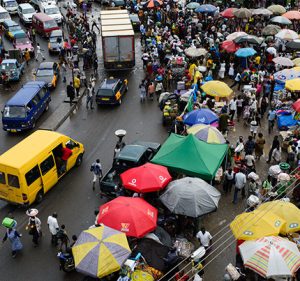According to the targets of the United Nations Sustainable Development Goal 2 (SDG 2), by the year 2030, Ghana should have: 1) ended hunger and ensured access by all people to safe, nutritious and sufficient food all year round, 2) ended all forms of malnutrition, 3) doubled agricultural productivity and incomes of small-scale food producers, in particular women, indigenous peoples, family farmers, pastoralists and fishers, 4) ensured sustainable food production systems and implement resilient agricultural practices that increase productivity and production, and 5) maintained genetic diversity of seeds, cultivated plants, and farmed and domesticated animals and their related wild species.
Achieving SDG 2 (zero hunger) is going to depend largely on agriculture.
Although some progress has been made, the issues of hunger, malnutrition, low agricultural productivity and unsustainable production practices persist.
The demand for food crop and livestock products are also likely to double as the increase in population is over the rate of increase in agricultural productivity of the major commodities that supply most of the nutritional needs of the populace.
A major challenge to achieving the targets over the coming decades would be how to attain sustainable agriculture and increase production, in the face of increasing climate change variability and invasive species?
The answer lies in the conservation of biodiversity in Ghana.
Biodiversity is the variability among living organisms from all sources including, terrestrial, marine and other aquatic ecosystems and the ecological complexes of which they are part; it also includes diversity within species, between species, and of ecosystems.
So, biodiversity is the basis of agriculture, and its conservation and sustainable use are essential for the future of agricultural development. For example, agriculture relies on biodiversity for pollination, soil microbial activity, development of robust insect or disease-resistant strains, and water cycling.
It has been established that, agricultural ecosystems that are rich in biodiversity provide a diversity of foods that can be used to improve food and nutrition security by broadening and diversifying the food base and diets across all ecologically zones.
But there is a problem. Biodiversity is diminishing at unprecedented rates, putting in jeopardy the sustainability of ecosystem services and the agriculture sector.
The loss of biodiversity in Ghana is mainly due to expansion of land use, destruction of diverse organisms and habitat loss arising from over-usage and/or inappropriate application of agro-chemicals, and over-exploitation of natural resources.
A potential solution to the problem is to implement agricultural practices (sustainable intensification approaches) that can increase the level of provision of ecosystems for improved agricultural productivity.
The techniques and strategies for biodiversity conservation-related agricultural systems exist in pockets of different knowledge structures or platforms, the challenge is to bring them together and repackage for effective utilisation.
This calls for a proactive approach of mainstreaming biodiversity conservation considerations into agricultural activities by institutionalising them in national agricultural policy formulation and implementation processes.
Currently biodiversity conservation issues are not explicitly incorporated into government decisions. This is partly due to lack of relevant information to generate understanding of how biodiversity is linked to the productivity of the agriculture sector.
There is therefore the need to connect providers and users of biodiversity information, package the information in forms that are easily accessible and can be effectively used to influence decision-making.
It is for this reason that the CONNECT Biodiversity project in Ghana commissioned context analysis and biodiversity information landscape studies, to aid in the selection of biodiversity information products, identify key barriers and opportunities for mainstreaming biodiversity into agricultural development decisions.
The studies found that: 1. Biodiversity information is needed in key decision-making processes such as: subsistence farming to sustain household food security and incomes; commercial farming (large-scale investors); national development planning processes and agriculture development planning (policy-making). Stakeholders are motivated to use biodiversity information based on their core mandates or roles in agriculture development and biodiversity sector; 2. Inadequate funding, low capacity, weak coordination, untimely delivery of information, difficulty in accessing information, as well as bureaucratic and rent seeking behaviour all constrain stakeholders to deliver, interpret and use biodiversity data effectively; 3. On the other hand, Ghana’s quest to achieve long-term development goals and major food security initiatives, need for biodiversity baseline information for environmental assessment and better alignment to economic indicators to inform national development agendas, all provide opportunities to improve demand, supply and use of biodiversity information.
The CONNECT biodiversity project implemented by UNEP-WCMC, IIED, Ghana Birdlife, NBA and CSIR-STEPRI has been operational since 2017.
It is now at the stage of firming up discussions on potential biodiversity information products, and delivery approaches of critical biodiversity information needed for achieving sustainability in the agriculture sector.
The project seeks to develop, test and valid a biodiversity information product tool to contribute to the process of mainstreaming biodiversity into the heart of government decision-making.
To help achieve SDG2, agriculture development and biodiversity conservation efforts must walk hand in hand. Since we all need food and nutrition security to survive, let us do our part to conserve the biodiversity around us.
Source: GNA







